THE INTERIOR DESIGN PROCESS
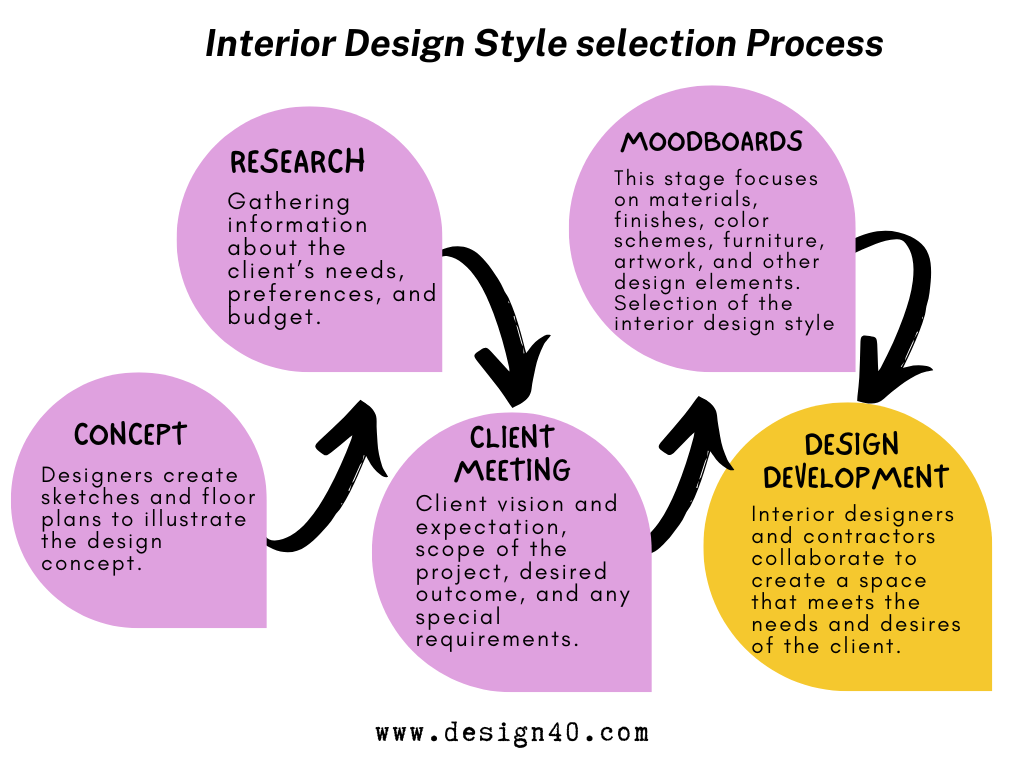
THE INTERIOR DESIGN PROCESS
Interior design is not just about making a space visually appealing, it is about crafting an environment that reflects personality, functionality and aesthetics. The interior design process involves a lot of planning, creativity and innovation. There are crucial steps involved in the interior design process.
Site Analysis
The interior design process begins after being given a brief by the client. After that, the designer visits the site to do an analysis of the space. At this stage, the designer takes photographs,videos and measurements of the space. This helps them move forward to the next step which is research and inspiration.

A designer taking measurements for renovation purposes.
Research and Inspiration
At this stage of the interior design process, designers carry out research and build ideas from different sources of inspiration. The designer also takes time to understand the client’s preferences which helps them lay the foundation for the design concept. They come up with moodboards to act as guides.

Design Forty Ltd. interior designers doing research on client’s wants and needs.
Conceptualization
This step involves building on the insights gathered during the research. Designers develop a concept that sums up the essence of the project. This concept serves as a guiding principle that informs every aspect of the design, from the overall theme to the smallest details. After coming up with the full concept, the interior designer develops sketches and ideas regarding the design.
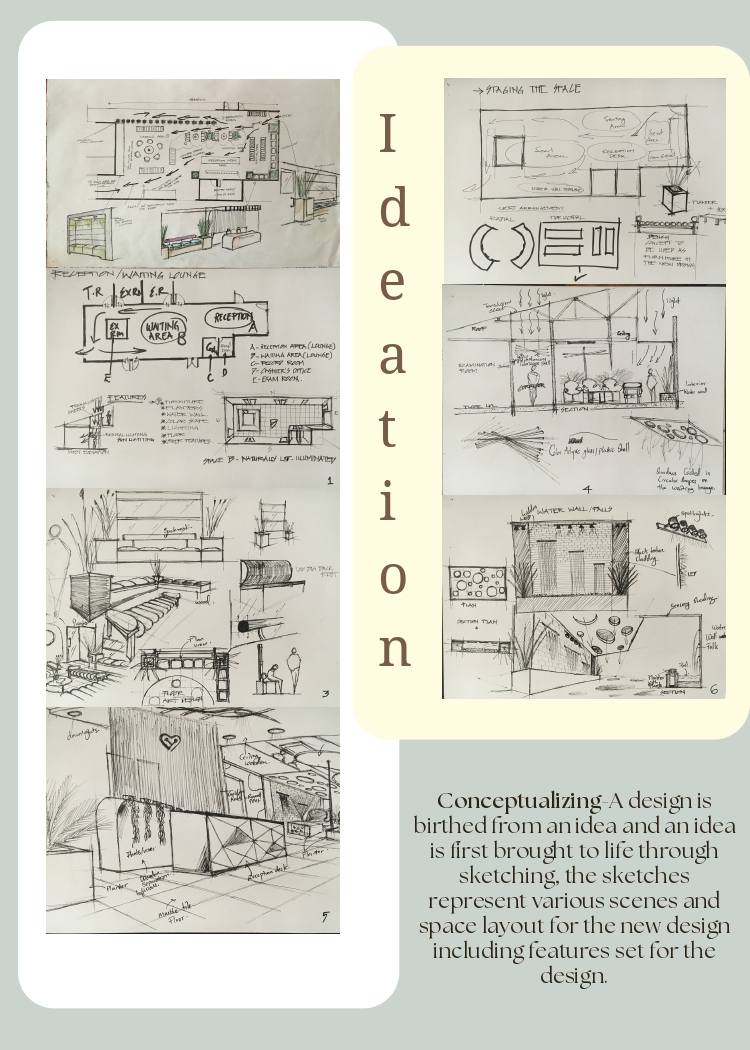
The conceptualization process in the interior design stage
Development stage
In this phase, the conceptual ideas start to take shape as designers dive deeper into the specifics of the design. This stage involves series of actions;
- Floor plans- Elevations and detailed drawings are created to refine layouts and arrangements of the space.
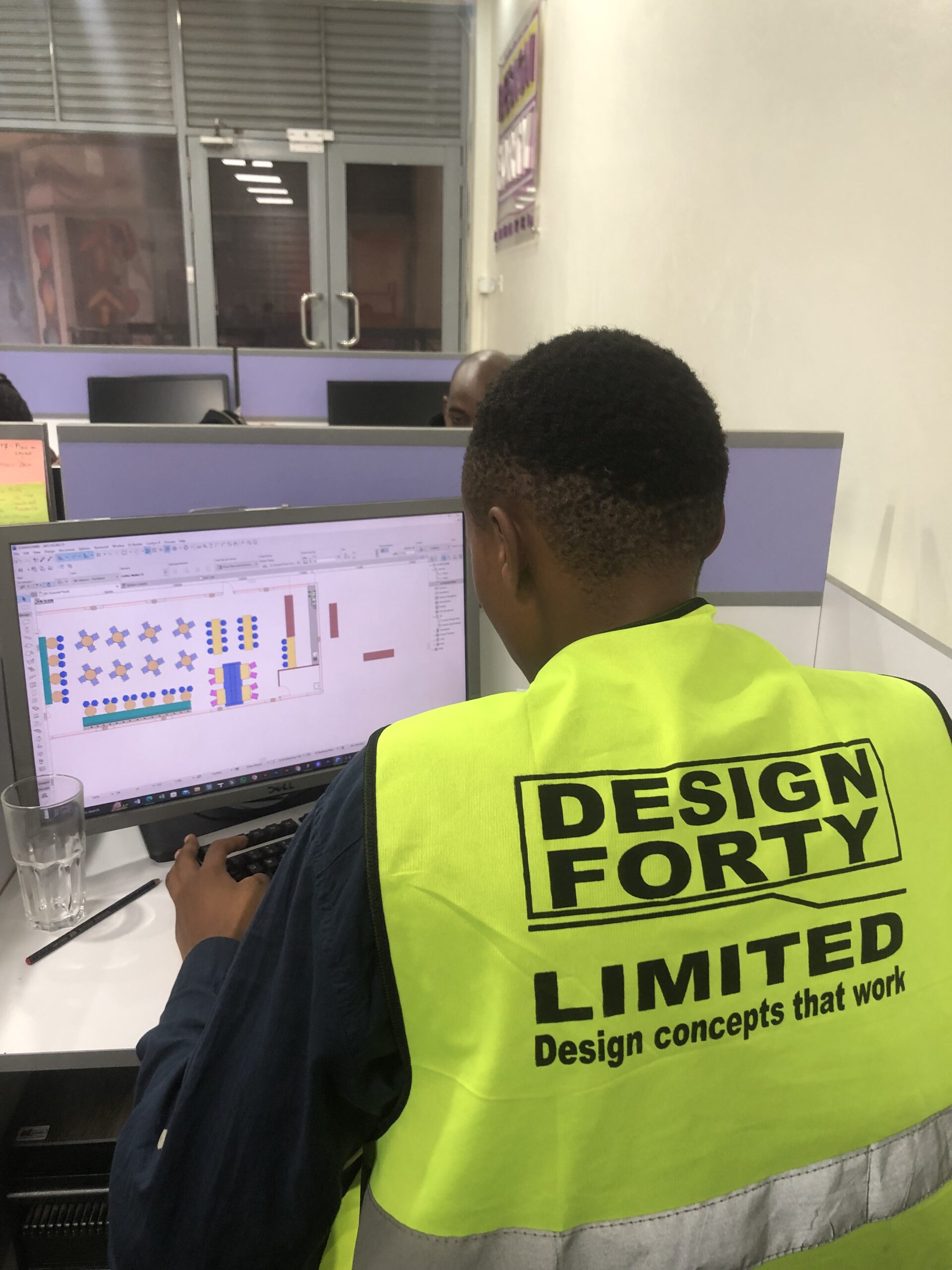
An interior designer working on a floor plan layout
- Quotations- Interior designers come up with a quotation once the design layout is approved in order to get the client feedback before proceeding any further. Once approved, they move forward with the interior design process.
- Material selection- Materials play a very important role in defining the look, feel, and functionality of a space. In the interior design process, designers carefully select materials based on factors such as aesthetics, durability, sustainability and budget considerations. Samples and swatches are evaluated to ensure the chosen materials align with the design.
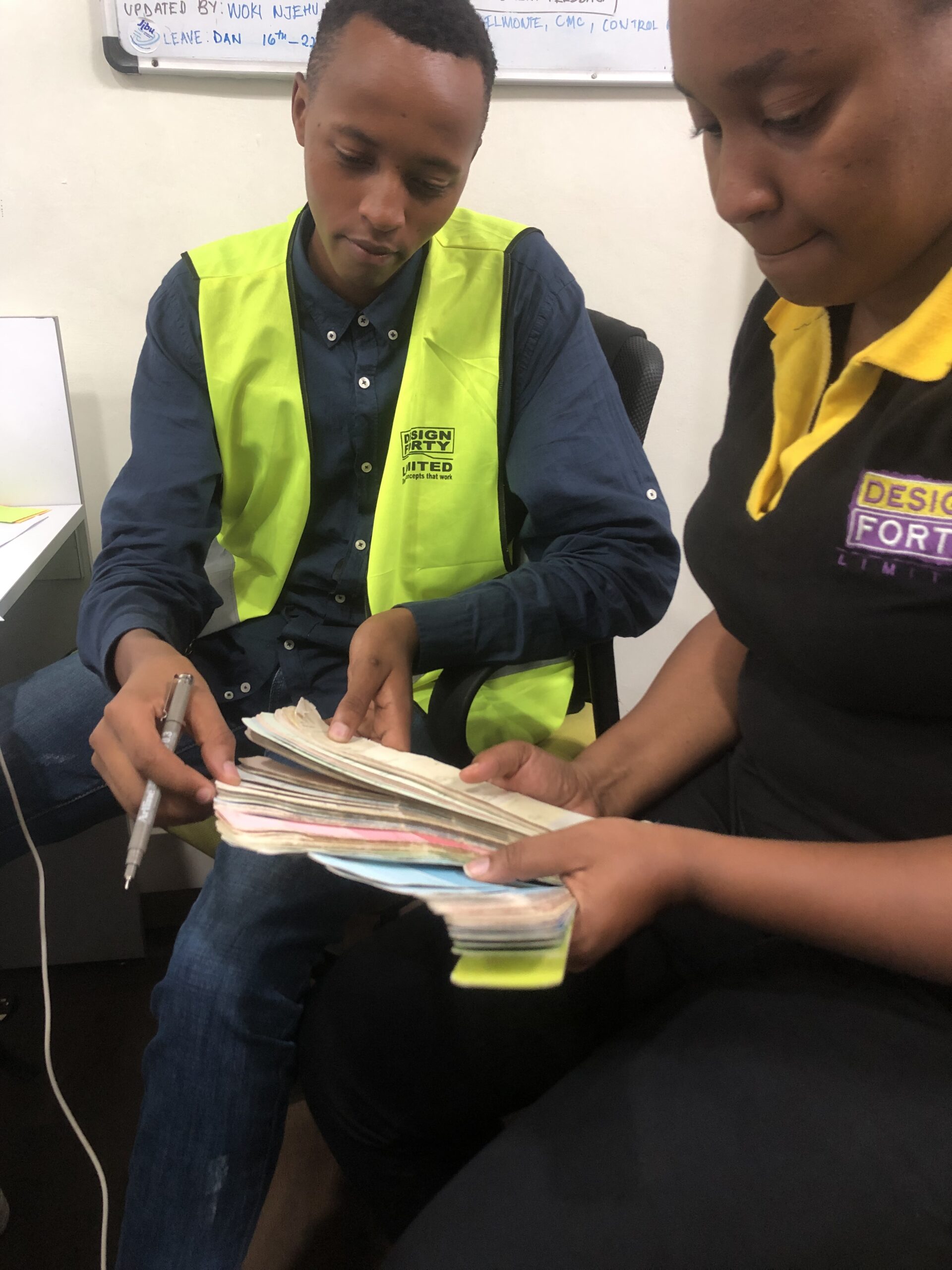
Material selection process
4. 3D renders- Interior designers create 3D renders using a software called D5. Renders are invaluable tools that allow designers to visualize and communicate their ideas effectively. By digitally recreating a space in three dimensions, designers can explore different layouts, color schemes, furniture arrangements, and lighting before the actual construction or renovation begins.
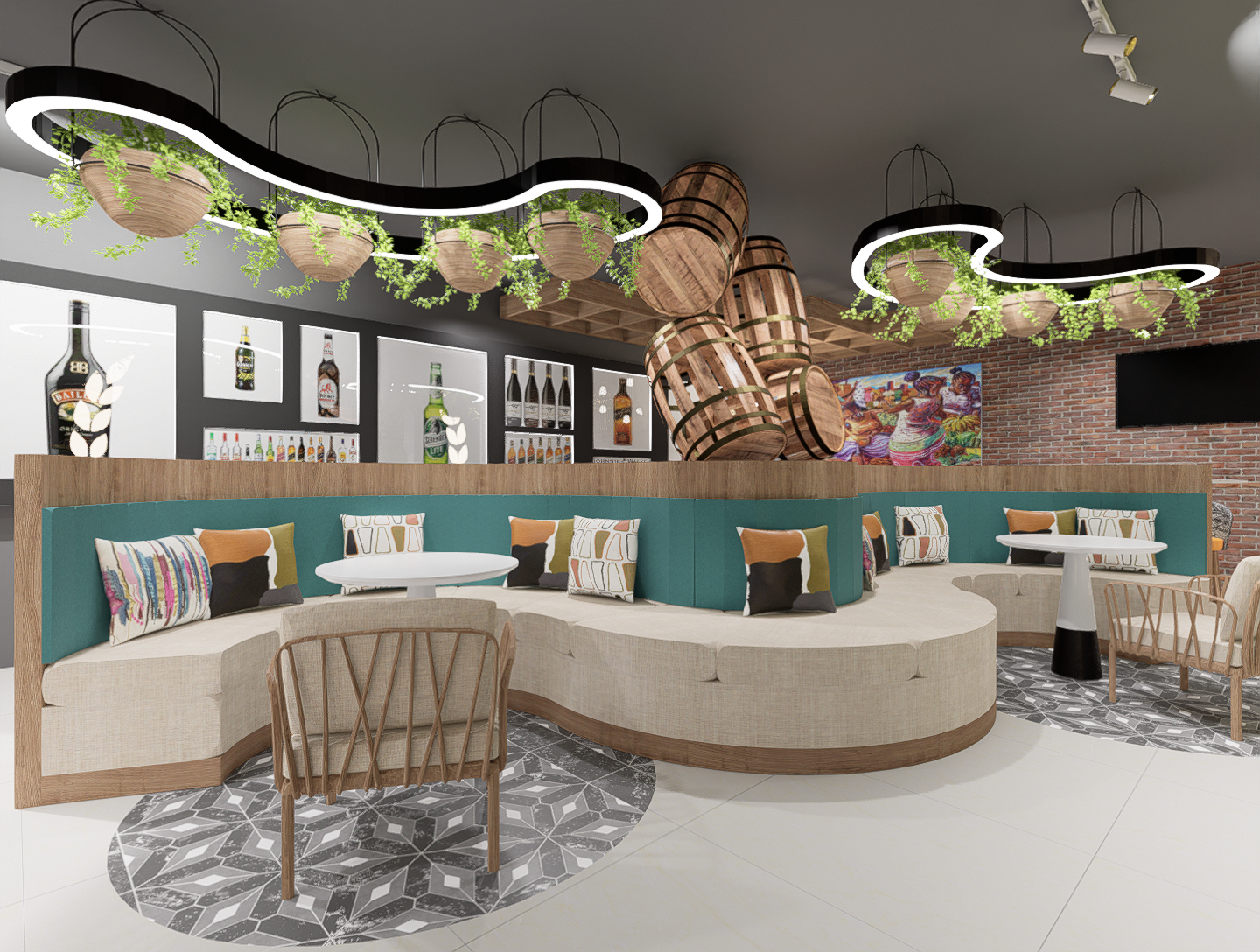
3D render of a customer experience lounge area
Implementation and Execution
With the design finalized, the focus shifts to implementation and execution. Project management skills come into play as designers coordinate with contractors, sub-contractors and casuals to bring the vision to life. Timelines, budgets and quality control measures are closely monitored to ensure a seamless and successful execution of the design plan.

A construction worker doing ceiling fixtures
Evaluation and Refinement
At this stage of the interior design process, interior designers evaluate the design thoroughly and they do it together with the clients. Refinements are done at this stage and any notable mistake is corrected. This is done to achieve the desired level of excellence.
Presentation and Hand Over
This is the final step of the interior design process. It involves handing over the completed project to the client. Designers provide guidance on maintenance and care to help clients preserve the integrity of the design. In addition to that, follow-up meetings may be scheduled to address any post-installation issues and ensure client satisfaction.
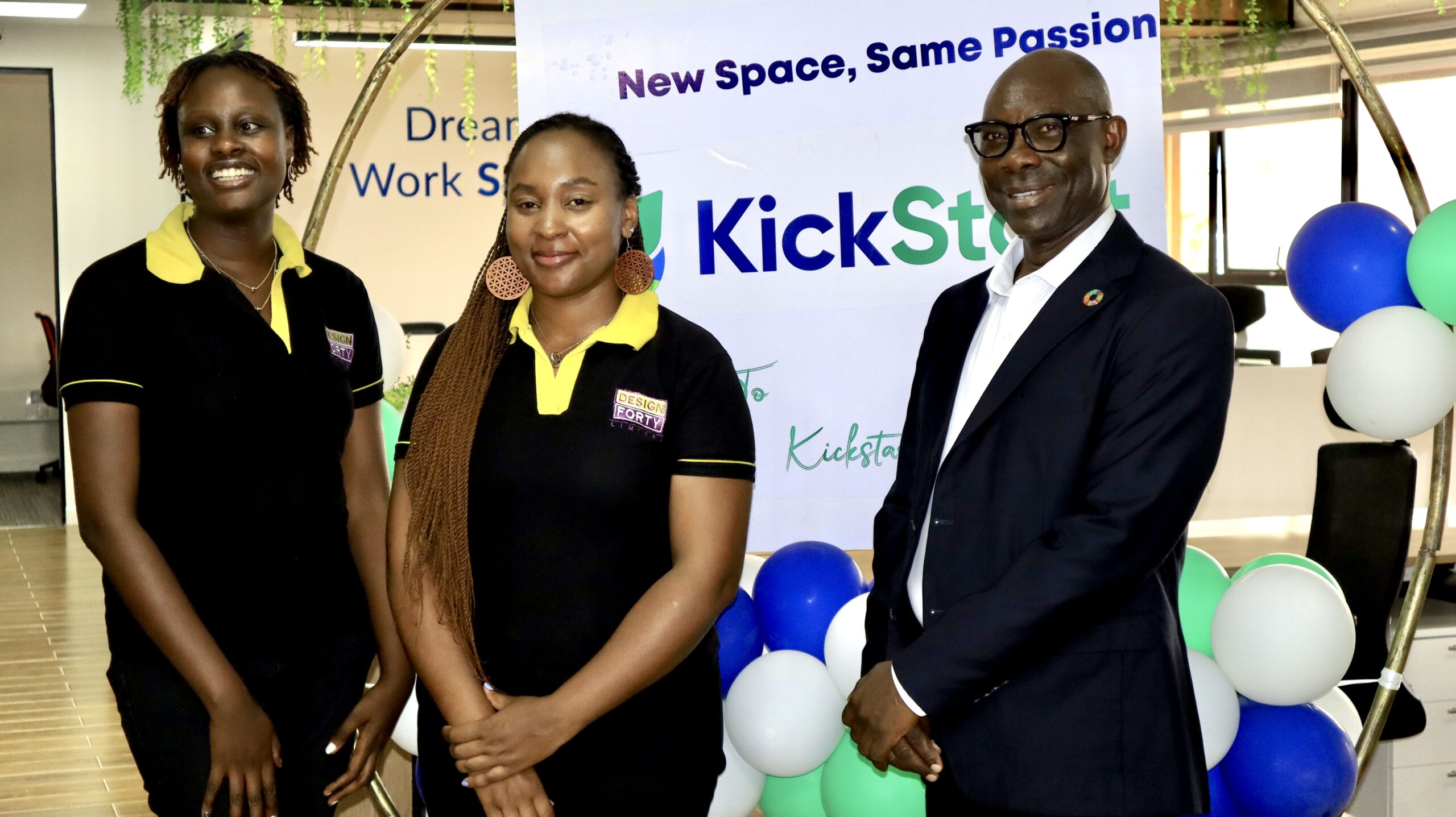
Successful handover of a project to our clients at ‘Kickstart’.
Client collaboration and Feedback
It is important to note that throughout the entire interior design process, client collaboration and feedback is involved. The clients are the final decision makers so no design without their approval can take place. Understanding the client’s needs and preferences is paramount in creating a design that resonates with them. Due to this reason, it can be argued that the interior design process is not fully linear. Even though there are steps to follow, the design process often involves iteration, exploration and adaptation.
In summary, the interior design process is a structured journey that unfolds in stages. Through creativity, collaboration and attention to detail, designers transform ideas into reality, creating spaces that are functional and visually appealing. Contact us to learn more.
You must be logged in to post a comment.